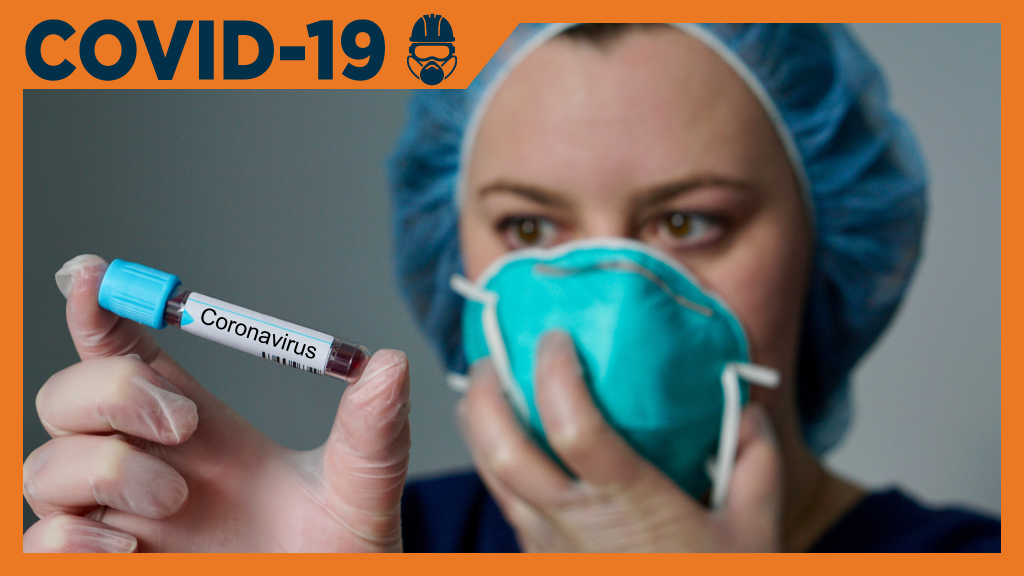With colder weather approaching and a second wave of COVID-19 threatening Ontario workplaces and communities, the head of the Infrastructure Health and Safety Association (IHSA) is encouraging construction employers to review their policies and procedures to ensure worksites are safe.
“The biggest thing is to review what you’re doing for any significant changes that may occur because of weather, time of year, change of work,” Enzo Garritano, president and CEO of the organization, explained in a recent interview.
He says following guidance that was established earlier in the year when little was known about the coronavirus and how it spread, might not be good enough these days.
“Especially with COVID, what we knew then and what was put into place then to combat it and to reduce the risk, is potentially going to change with the weather changing. You have to continually look at it and say, ‘What’s changed in my exposures and in my risks and how am I going to deal with it now?’ ”
Contractors should be assessing their risks and updating their preparedness plans to deal with new situations caused by colder temperatures, he said. Something as simple as sharing tools or equipment on a worksite in winter, for example, could pose a problem because if someone wipes their nose with a glove and then touches tools that are used by others it could be a common point for spread of the virus.
The IHSA has developed a guide to help employers conduct a risk assessment to determine the most appropriate controls and actions for a workplace during the COVID-19 pandemic. As the guide notes, all workplace parties — managers, workers, clients and contractors — have an important role to play in risk mitigation.
“Any establishment, any employer should be doing an assessment,” said Garritano. “You want to identify where your risks are. Without that, the rest of it’s going to fail. What’s your program established on? It’s got to be on what risks you’re exposed to.”
When doing an assessment, Garritano said the first step is recognizing and identifying the risk, followed by evaluating the risk to determine who might be harmed and how. Then, employers should decide on and implement control measures, and finally evaluate the results and make improvements.
Employers should take a systematic approach and follow all the steps to ensure that an important item or risk is not missed, said Garritano.
“Whatever we do we want to try to make sure that we do things holistically, that we’re not missing out on something. It’s like finance. There’s rules around finance, you want to close all the loops and make sure everything is done properly. It’s no different in risk assessment.”
Everybody on a worksite has an important role to play in taking steps to reduce the spread of COVID-19, so it’s important to engage everybody in the risk assessment process, said Garritano.
“We may not know the tiny anomalies of every job and there might be some significant risks in it. But if you’re looking at traffic, talk to the guys in traffic control, talk to the supervisors overseeing it. If you’re looking at working at heights, ‘Who are the workers using the equipment?’ Their risk might be, ‘Hey, I’ve seen my lanyard get cut off by sharp edges,’ but no one considered the sharp edges before.
“It’s about identifying the risks that exist in the specific work that’s going on and if you don’t have that dialogue with the staff, you’re assuming you know all the answers. Having that input is critical.”
The first step of identifying a risk, whether it be falls, electrical contacts or biological hazards like COVID is important, said Garritano, because it enables employers to hone in on areas of immediate danger.
For the second stage of assessing risk, the IHSA suggests that they be categorized as high, medium and low so controls can be put in place.
“It’s about what is going to cause you something traumatic and potentially fatal versus something that’s going to cause you a scratch or a muscle strain or something else,” said Garritano. “Again, you want to be able to put the efforts into the high priority ones and then work your way through the others. They’re all important but obviously you don’t want to put as much energy into those that aren’t.”
For the third step of putting in place control measures, Garritano said the obvious move is to eliminate the risk but that is not always possible, so employers then have to look at measures like engineering and administrative controls or redesigning a task and using PPE.
In the final step, meanwhile, employers should evaluate and create a plan to monitor that controls are working, he noted.
Garritano said COVID-19 poses additional problems for employers because it’s difficult to tell who has the virus.
“It’s a little more challenging because you don’t know if someone is ill. They can be carrying it without knowing. You should assume people are infected. If you work with that assumption you move to, ‘OK, how do we control it?’ and it’s going to be through physical distancing, handwashing and facial coverings.”











Recent Comments